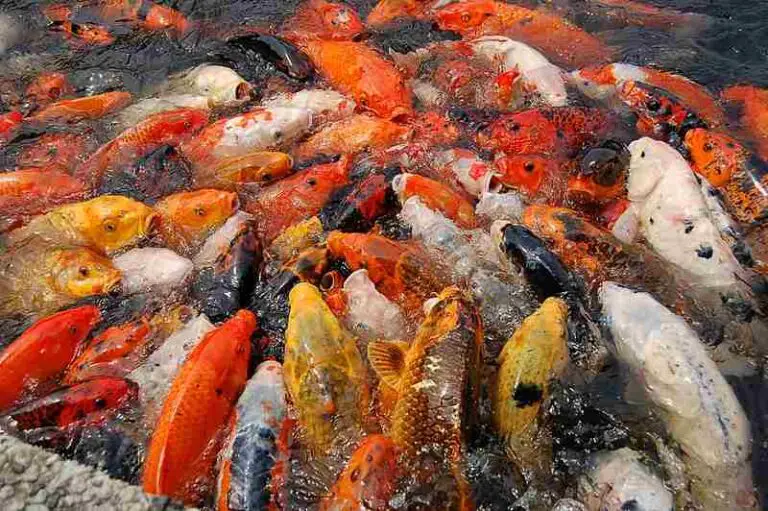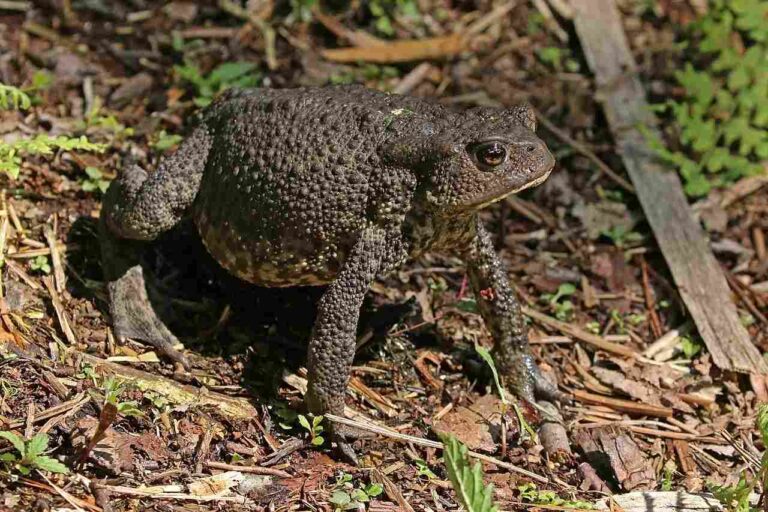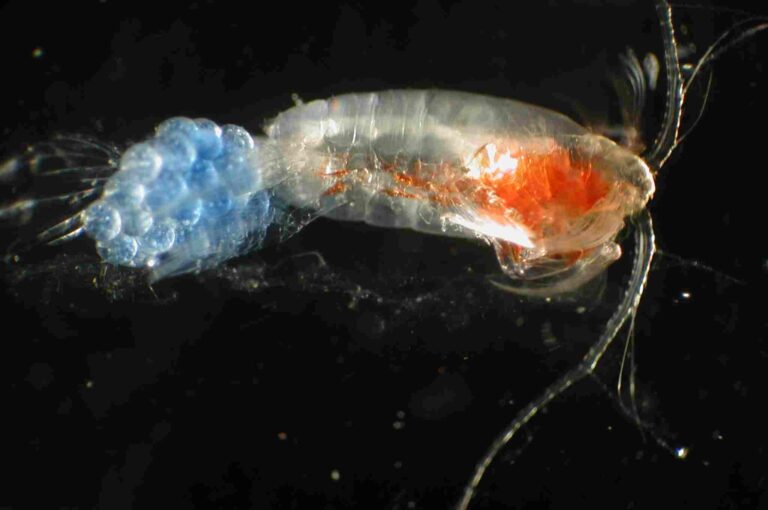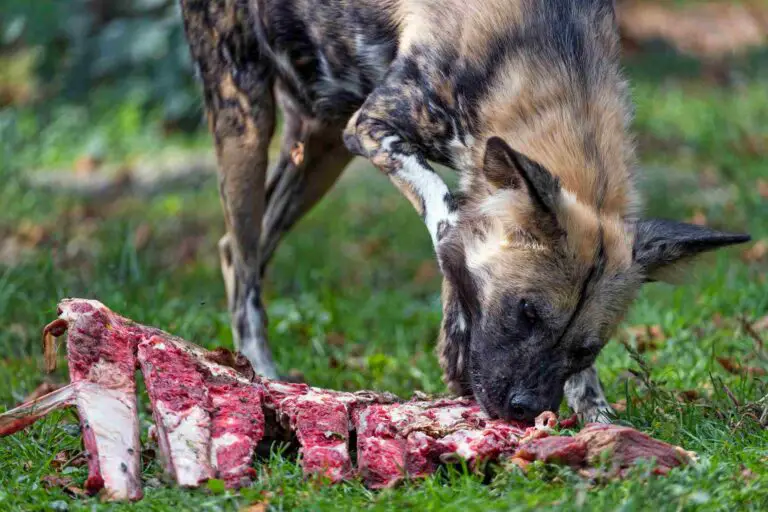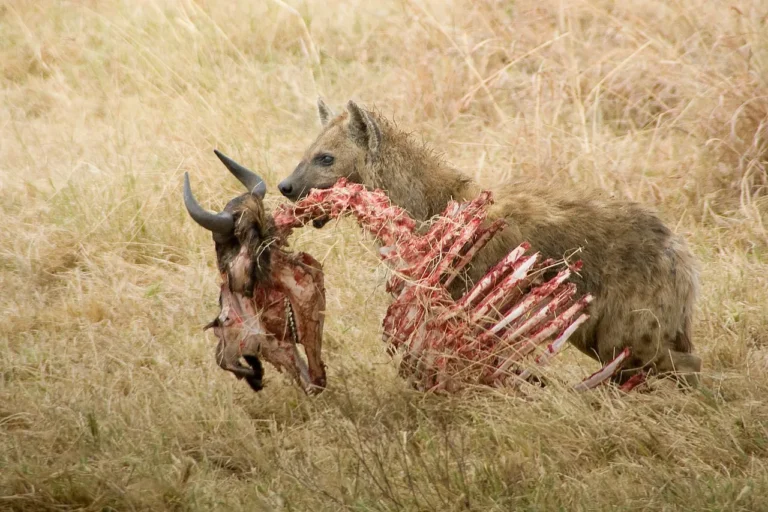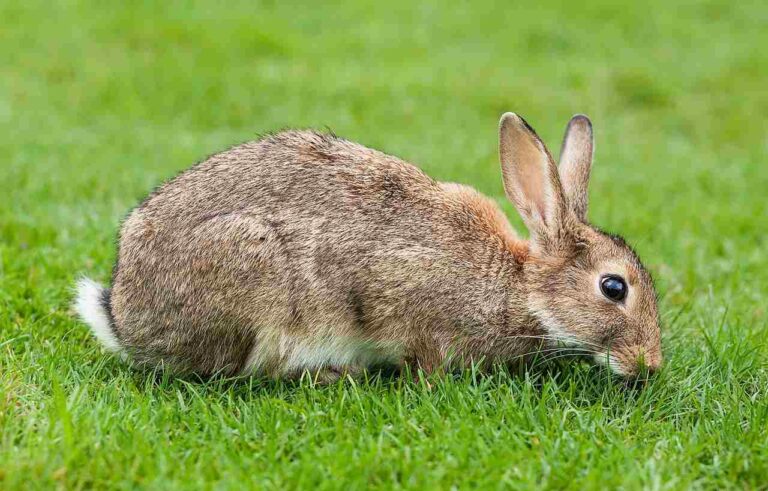What Do Whales Eat in The Ocean? 13+ Potential Prey of Whales Discussed
Whales in the ocean fed on a broad variety of marine organisms including zooplankton like rill, jellyfish, different fish species, squid, macroscopic crustaceans like crabs, lobsters, shrimp, birds like albatrosses and penguins, reptiles like turtles, as well as mammals like seals, sea lions, and smaller dolphins.
Here we discuss various organisms which whales eat in the ocean, in no particular order.
1). Seals (Do Whales Eat Seals?)
Seals are one of the most common mammalian prey for whales, especially killer whales. These marine mammals provide a rich source of fat, proteins, and various nutrients for whales. Additionally, seals are relatively easy for whales to hunt.
Whales, such as killer whales, have been observed preying on seals in various parts of the world. They have developed specialized hunting techniques to capture and consume these marine mammals. Killer whales, also known as orcas, are particularly skilled at hunting seals. They use their intelligence and teamwork to corner and capture their prey.
Seals are a valuable food source for whales due to their high energy content. The fat found in seals provides a concentrated source of energy, which is essential for the survival and well-being of whales. Proteins and other nutrients found in seals also contribute to the overall nutritional needs of whales.
The hunting process for whales targeting seals can be quite fascinating. Whales often use their size and strength to their advantage, overpowering the seals and preventing them from escaping. They may also use their speed and agility to chase down seals in the water. Once a seal is caught, the whale will consume it whole or tear it apart using their powerful jaws and teeth.
Seals are not only a significant food source for whales, but they also play a crucial role in the marine ecosystem. They help maintain the balance of fish populations by preying on smaller fish species. Seals also serve as indicators of the overall health of the marine environment. Their presence or absence can provide valuable insights into the state of the ecosystem.
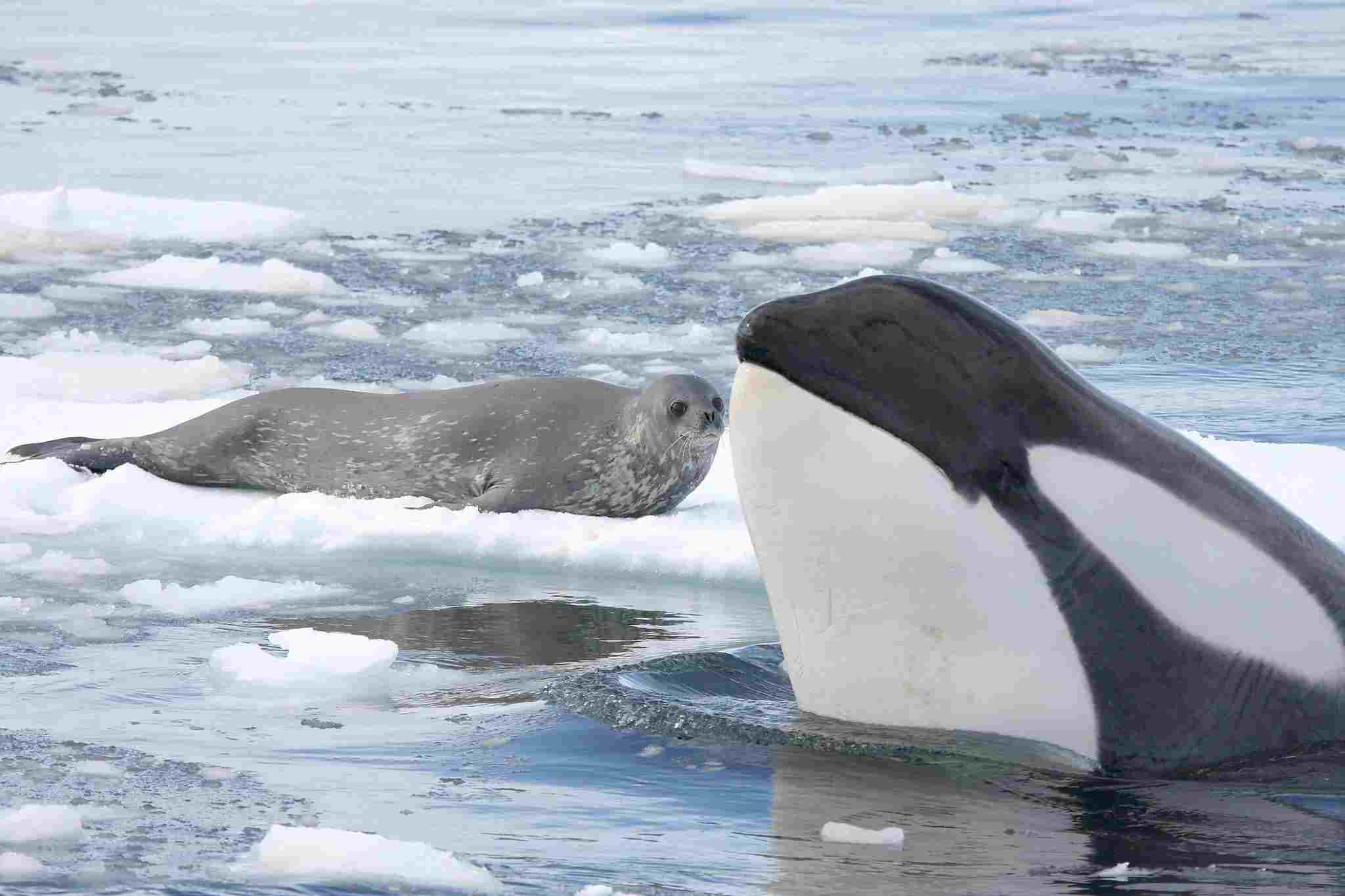
2). Fish (Do Whales Eat Fish?)
Whales are known to subsist on a diet that primarily consists of fish. They have a wide range of fish species that they consume, ranging from schooling fish to even sharks in some cases. The benefits of eating fish for whales are numerous.
Firstly, fish provide a rich source of nutrients, including essential fatty acids, proteins, and minerals. These nutrients are vital for the growth, development, and overall health of whales. Fish also contain high levels of omega-3 fatty acids, which are beneficial for maintaining healthy brain function and cardiovascular health in whales.
Secondly, fish are a highly abundant food source in the ocean. They form large schools, making it easier for whales to locate and capture their prey. Whales have developed various hunting techniques to efficiently catch fish, such as bubble-net feeding and lunge feeding. These techniques allow whales to engulf large quantities of fish in a single gulp.
Furthermore, fish provide a high-energy food source for whales. The oils and fats found in fish provide a concentrated source of energy, which is essential for the energy-intensive activities of whales, such as migration and reproduction.
3). Dolphins (Do Whales Eat Dolphins?)
Dolphins are a fascinating species, and when discussing the prospects of whales eating dolphins, it’s important to bear in mind that many whales are actually dolphins, and all dolphins are whales. However, it is worth noting that the larger species of whales, such as the orca (which is itself a large dolphin), can feed on smaller dolphin species like bottlenose dolphins and their calves.
While this does occur, it is extremely rare compared to other prey that whales consume. This is because dolphins are apex predators in their immediate environment, meaning they are at the top of the food chain. Whales may opportunistically prey on vulnerable dolphins or feed on their remains, especially if their preferred prey is not available.
Whales primarily target smaller species when it comes to consuming dolphins. The larger species of whales, such as the orca, have been known to prey on smaller dolphin species like bottlenose dolphins and their calves. However, this type of predation is not common and is considered an exception rather than the norm.
Dolphins, including smaller species like bottlenose dolphins, are apex predators in their own right. They have evolved to be highly skilled hunters and are capable of catching a wide variety of prey, including fish, squid, and even smaller marine mammals. Their agility, intelligence, and cooperative hunting techniques make them formidable predators in their marine environment.
Whales, on the other hand, are generally larger and have different feeding strategies. While they may occasionally target dolphins, their primary prey tends to be fish, krill, and other small marine organisms. Whales have adapted various hunting techniques to capture their prey, such as filter feeding, lunge feeding, and bubble-net feeding.
4). Penguins (Do Whales Eat Penguins?)
Whales are known to consume a variety of prey in the ocean, and penguins are one of the seabirds that can fall victim to their predatory instincts. While whales primarily target fish, krill, and other small marine organisms, they can also ambush penguins while they are swimming in search of their food. Penguins, being agile swimmers, are not easy prey for whales, but they can still become targets.
Predation on penguins by whales is not too common, as penguins tend to avoid areas that are frequented by large marine predators like sharks and whales. Penguins have evolved to be excellent swimmers and have developed strategies to evade potential threats. They often stay close to the safety of land or ice, where they can quickly escape into the water if they sense danger.
Whales that do prey on penguins are usually the larger species, such as orcas, which are known for their diverse diet. Orcas, also known as killer whales, are actually a type of dolphin and are highly skilled hunters. They have been observed hunting and consuming penguins, especially in regions where penguins are abundant.
In addition to penguins, whales may also prey on other seabirds that inhabit the ocean. Seabirds, like penguins, albatrosses and gulls; are vulnerable to predation when they are in the water, as they are not as agile in the water as they are in the air. Whales can take advantage of this vulnerability and target seabirds that are within their reach.
However, it is important to note that predation on penguins and other seabirds by whales is not a common occurrence. Whales have a wide range of prey options available to them, and they tend to focus on more abundant food sources, such as fish and krill. Penguins and other seabirds are not typically a significant part of their diet.
5). Krill (Do Whales Eat Krill?)
Krill is a vital component of the diet of baleen whales, who consume them in large quantities. These tiny, microscopic organisms, along with other zooplankton, make up a significant portion of the diet of baleen whales. Krill can be found in abundance in certain areas of the ocean, particularly in nutrient-rich waters.
Whales rely on their specialized baleen plates to filter out the krill from the water. They swim with their mouths open, allowing the water to pass through the baleen plates while trapping the krill inside. This feeding technique enables whales to consume large quantities of krill in a single gulp.
Krill serves as a rich source of nutrition for whales. They are high in protein and contain essential fatty acids, which are important for the whales’ energy needs and overall health. In addition to krill, baleen whales also consume other types of zooplankton, such as copepods and amphipods, which provide additional nutrients.
The abundance of krill in certain regions of the ocean plays a crucial role in the migration patterns of baleen whales. These whales follow the seasonal movements of krill, often traveling long distances to reach areas where krill populations are concentrated. This ensures a reliable food source for the whales and supports their survival and reproduction.
6). Shrimp (Do Whales Eat Shrimp?)
Whales are known to consume shrimp as part of their diet. Shrimp are a type of crustacean that whales are able to find and feed on in various locations. While shrimp may not be a major dietary component for whales, they still serve as a valuable food source.
Shrimp provide essential nutrients for whales, including protein and other important minerals. These crustaceans are often found in coastal areas and shallow waters, where whales can easily access them. Whales have the ability to locate shrimp using their keen sense of smell and their ability to detect vibrations in the water.
Although shrimp are not the primary food source for whales, they still play a significant role in their diet. In addition to shrimp, whales also consume other types of crustaceans, such as crabs and lobsters. These crustaceans provide additional nutrients and contribute to the overall diversity of the whales’ diet.
Whales have different feeding strategies when it comes to consuming shrimp. Some species, like the humpback whale, use a technique called lunge feeding. This involves opening their mouths wide and engulfing large amounts of water and prey, including shrimp, in a single gulp. Other species, like the sperm whale, have specialized teeth that allow them to capture and consume individual shrimp.
It’s important to note that the availability of shrimp as a food source for whales can vary depending on the location and season. Shrimp populations can fluctuate due to factors such as water temperature, currents, and the availability of prey for shrimp. Whales may need to adapt their feeding patterns and migrate to different areas in search of shrimp-rich waters.
7). Jellyfish (Do Whales Eat Jellyfish?)
Jellyfish are another zooplankton food source that whales consume, although jellyfish may not be classified as zooplankton themselves. Whales are able to find jellyfish in various locations, often in coastal areas and shallow waters. Jellyfish serve as a source of food for whales, providing them with nutrients and sustenance.
While jellyfish may not be a major dietary component for whales, they still play a role in their diet. Whales have the ability to locate jellyfish using their senses, such as their keen sense of smell and their ability to detect vibrations in the water. They are able to find jellyfish in their natural habitats and consume them as part of their feeding patterns.
It’s important to note that jellyfish are not the sole food source for whales. Whales have a diverse diet and consume a variety of other marine organisms, including fish, crustaceans, and other types of zooplankton. However, jellyfish contribute to the overall diversity of the whales’ diet and provide them with additional nutrients.
The availability of jellyfish as a food source for whales can vary depending on the location and season. Jellyfish populations can fluctuate due to factors such as water temperature, currents, and the availability of prey for jellyfish. Whales may need to adapt their feeding patterns and migrate to different areas in search of jellyfish-rich waters.
8). Squid (Do Whales Eat Squids?)
Whales are known to consume a variety of marine organisms, and squids are one of the food sources that they rely on. Squids are mollusks that inhabit the ocean, and they serve as an important source of nutrition for whales.
Whales have the remarkable ability to locate squids in their natural habitats. They can find squids in various locations, such as deep waters or near the surface. Whales use their exceptional senses, including their keen sense of smell and their ability to detect vibrations in the water, to locate squids. These sensory abilities allow whales to navigate through the vast ocean and find their prey efficiently.
Squids provide a significant source of sustenance for whales. They are rich in nutrients and offer a high energy content, which is essential for the whales’ survival and overall health. The consumption of squids contributes to the whales’ growth, reproduction, and energy requirements.
In addition to squids, whales also consume other crustaceans as part of their diet. These include various types of shrimp, lobsters, and crabs. Whales have a diverse feeding pattern and adapt their diet based on the availability of different prey species. This flexibility allows them to maintain a balanced diet and meet their nutritional needs.
It’s important to note that squids are not the sole food source for whales. Whales have a wide range of dietary preferences and consume other marine organisms, such as fish and zooplankton. The inclusion of squids in their diet adds to the overall diversity of their feeding patterns and ensures that they obtain a wide range of nutrients.
The availability of squids as a food source for whales can vary depending on factors such as location and season. Squid populations can fluctuate due to changes in ocean conditions and the availability of prey for squids. Whales may need to adjust their feeding patterns and migrate to different areas in search of squid-rich waters.
9). Lobsters (Do Whales Eat Lobsters?)
Whales are known to consume a variety of crustaceans as part of their diet, and lobsters are one of the crustacean species that they feed on. Lobsters provide a valuable source of nutrition for whales, offering essential nutrients and energy for their survival and overall health.
Whales have the remarkable ability to locate lobsters in their natural habitats. They can find lobsters in various locations, such as rocky areas or near the ocean floor. Using their exceptional senses, including their keen sense of smell and their ability to detect vibrations in the water, whales can navigate through the ocean and find their prey efficiently.
Lobsters are rich in nutrients and offer a high energy content, making them an important food source for whales. The consumption of lobsters contributes to the whales’ growth, reproduction, and energy requirements. They provide a valuable source of protein, vitamins, and minerals that are essential for the whales’ overall well-being.
In addition to lobsters, whales also consume other crustaceans as part of their diet. This includes various types of shrimp and crabs. Whales have a diverse feeding pattern and adapt their diet based on the availability of different prey species. This flexibility allows them to maintain a balanced diet and meet their nutritional needs.
It’s important to note that lobsters are not the sole food source for whales. Whales have a wide range of dietary preferences and consume other marine organisms, such as fish and zooplankton. The inclusion of lobsters in their diet adds to the overall diversity of their feeding patterns and ensures that they obtain a wide range of nutrients.
The availability of lobsters as a food source for whales can vary depending on factors such as location and season. Lobster populations can fluctuate due to changes in ocean conditions and the availability of prey for lobsters. Whales may need to adjust their feeding patterns and migrate to different areas in search of lobster-rich waters.
10). Crabs (Do Whales Eat Crabs?)
Whales are known to consume a variety of crustaceans as part of their diet, and crabs are one of the crustacean species that they feed on. Crabs provide a valuable source of nutrition for whales, offering essential nutrients and energy for their survival and overall health.
Whales have the remarkable ability to locate crabs in their natural habitats. They can find crabs in various locations, such as rocky areas or near the ocean floor. Using their exceptional senses, including their keen sense of smell and their ability to detect vibrations in the water, whales can navigate through the ocean and find their prey efficiently.
Crabs are rich in nutrients and offer a high energy content, making them an important food source for whales. The consumption of crabs contributes to the whales’ growth, reproduction, and energy requirements. They provide a valuable source of protein, vitamins, and minerals that are essential for the whales’ overall well-being.
In addition to crabs, whales also consume other crustaceans as part of their diet. This includes various types of shrimp and lobsters. Whales have a diverse feeding pattern and adapt their diet based on the availability of different prey species. This flexibility allows them to maintain a balanced diet and meet their nutritional needs.
It’s important to note that crabs are not the sole food source for whales. Whales have a wide range of dietary preferences and consume other marine organisms, such as fish and zooplankton. The inclusion of crabs in their diet adds to the overall diversity of their feeding patterns and ensures that they obtain a wide range of nutrients.
The availability of crabs as a food source for whales can vary depending on factors such as location and season. Crab populations can fluctuate due to changes in ocean conditions and the availability of prey for crabs. Whales may need to adjust their feeding patterns and migrate to different areas in search of crab-rich waters.
11). Birds (Do Whales Eat Birds?)
Whales are known to consume a variety of marine organisms, including birds. While birds are not a primary food source for whales, they may occasionally prey on them under certain circumstances. Asides penguins, whales have been observed feeding on birds such as albatrosses, gulls, and petrels.
Whales are opportunistic feeders and will consume birds if they are readily available and within their reach. However, it is important to note that birds make up a small portion of a whale’s diet compared to other prey species such as fish, krill, and squid.
The feeding behavior of whales towards birds is influenced by several factors. Whales primarily rely on their exceptional hunting tactics to locate and capture their prey, which are typically found underwater. Birds, on the other hand, are aerial creatures and spend most of their time flying above the water surface. This makes it less likely for whales to encounter birds during their feeding activities.
Furthermore, birds are agile and can easily evade a whale’s attempts to capture them. Whales are adapted to hunting and feeding on larger marine organisms that are more abundant and provide a higher nutritional value. Therefore, they are less likely to actively pursue birds as a primary food source.
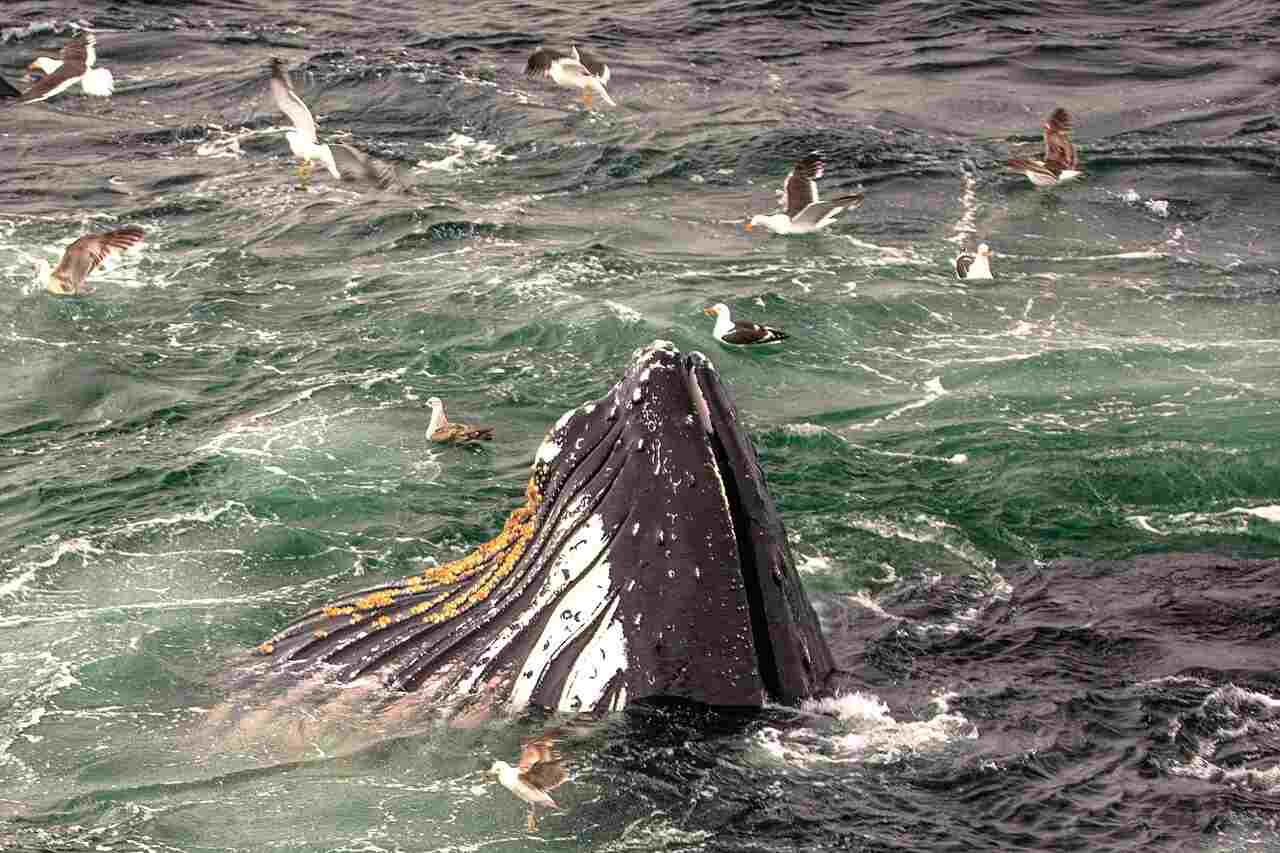
12). Sea Lions (Do Whales Eat Sea Lions?)
Sea lions are indeed a common food source for some whales, making them one of the most common mammalian prey for these marine giants. Whales have the ability to locate sea lions in the ocean, especially when they are near the water’s surface. Sea lions are rich in nutrients and provide a valuable source of food for whales. However, it is important to note that sea lions are not only prey but also predators themselves. Other large predators, such as sharks, also feed on sea lions.
In addition to sea lions, whales also consume other mammals as part of their diet. While sea lions are a significant food source for some whale species, they are not the only mammals that whales prey upon. Whales have been known to eat other marine mammals, such as seals and even smaller cetaceans like dolphins.
Whales are opportunistic feeders and will consume a variety of prey depending on availability and their specific dietary needs. They have evolved to feed on a diverse range of marine organisms to ensure their survival. While sea lions play a role in the diet of some whale species, they are just one component of a larger and more varied diet.
13). Turtles (Do Whales Eat Turtles?)
Turtles are indeed a part of the diverse diet of whales, serving as a reptilian food source in the ocean. Whales have the remarkable ability to locate turtles in their habitats, often finding them in coastal areas or near the water’s surface. Turtles provide a valuable source of nutrition for whales, as they are rich in nutrients and offer a substantial food supply. However, it is important to note that turtles are not a major dietary component for whales. Whales rarely consume turtles due to various factors.
Aside from turtles, whales also have a preference for other reptiles as part of their diet. While turtles are occasionally consumed by whales, they are not the sole reptilian prey. Whales have been known to eat other reptiles such as sea snakes, expanding their dietary choices in the ocean. However, it is worth mentioning that the consumption of reptiles by whales is not as common as other prey items.
Whales are opportunistic feeders, adapting their diet based on availability and specific dietary needs. While turtles are occasionally consumed, whales have a more varied diet that includes a wide range of marine organisms. They have evolved to feed on different prey to ensure their survival in the vast ocean ecosystem.
It is important to understand that the consumption of turtles by whales is not a significant aspect of their feeding habits. Whales primarily rely on other prey items such as fish, krill, and squid, which make up the majority of their diet. Turtles serve as an occasional food source for whales, but they do not play a major role in their overall dietary composition.
Therefore, while whales do eat turtles, they are not a major dietary component for these marine giants. Whales have a diverse diet that includes various marine organisms, and turtles serve as an occasional food source rather than a staple prey item.
14). Polar Bears (Do Whales Eat Polar Bears?)
While it is very rare and hardly documented, there have been instances where whales have been found swimming alongside polar bears. However, it is important to note that whales do not actively hunt and consume polar bears as a part of their regular diet. Whales are primarily filter feeders, relying on small marine organisms such as krill and fish for sustenance. The conditions under which whales may eat polar bears are extremely rare and occur when other prey options are not available.
On the other hand, it is more common for polar bears to be found eating whale carcasses on the coast. As scavengers, polar bears take advantage of the opportunity to feed on the remains of dead whales. This behavior is observed when whales die and wash ashore, providing a valuable food source for polar bears. However, it is important to note that this does not indicate that whales actively hunt and kill polar bears.
It is worth mentioning that polar bears are apex predators in their own right and have no natural predators. While whales are larger and capable of preying on other marine organisms, including smaller marine mammals, they do not actively hunt polar bears. Each species occupies a different ecological niche, with polar bears being more terrestrial and whales being adapted for life in the ocean.
Conclusion
*In conclusion, this article has explored the various prey options of whales in the ocean. We have discussed the different marine organisms that whales consume, including seals, fish, dolphins, penguins, krill, shrimp, jellyfish, squid, lobsters, crabs, birds, sea lions, turtles, and even polar bears.
Whales are primarily filter feeders, relying on small marine organisms such as krill and fish for sustenance. While it is rare for whales to actively hunt and consume polar bears, there have been instances where they have been found swimming alongside them. However, this behavior occurs under extremely rare conditions when other prey options are not available.
On the other hand, polar bears are more commonly found feeding on whale carcasses that wash ashore. As scavengers, they take advantage of the opportunity to feed on the remains of dead whales. It is important to note that this does not indicate that whales actively hunt and kill polar bears.
Each species occupies a different ecological niche, with polar bears being more terrestrial and whales being adapted for life in the ocean. By consuming various marine organisms, whales play a crucial role in regulating populations and ensuring the health of the ocean.
FAQs
1. Do Whales Eat Phytoplankton?
Baleen whales primarily eat zooplankton, specifically in the form of krill. Krill is a primary consumer that feeds on phytoplankton. By consuming krill, whales play a crucial role in the nutrient recycling chain. When whales eat krill, they also ingest the nutrients from the phytoplankton that the krill has consumed.
These nutrients are then passed through the whale’s digestive system and are eventually expelled in their feces. This fecal matter contains valuable nutrients that help support the growth of phytoplankton.
As phytoplankton is the primary producer in the ocean, this nutrient recycling process is vital for maintaining the overall health and productivity of marine ecosystems. So, while whales do not directly eat phytoplankton, their consumption of krill indirectly supports the growth and abundance of phytoplankton in the ocean.
2. Why do Whales Eat Krill?
Whales, such as the blue whale, primarily eat krill because it is usually available in large numbers and provides essential nutrients like iron and protein. Krill is a rich source of these nutrients, which whales utilize to produce blubber. Blubber is a thick layer of fat that helps whales maintain their body temperature and store energy for long migrations or periods of fasting.
Krill also offers a high caloric value, allowing whales to consume a large amount of food in a relatively short time. This is especially important for filter-feeding whales, as they need to consume a significant quantity of food to meet their energy requirements.
Additionally, krill is a highly efficient food source for whales due to its abundance and accessibility. It forms dense aggregations, making it easier for whales to locate and consume large quantities in a single feeding event.
3. How Much do Whales Eat?
Whale feeding habits vary depending on the species and their specific dietary needs. On average, whales consume large quantities of food to sustain their massive size and energy requirements. The amount of food a whale eats depends on various factors, including its size, metabolic rate, and the availability of prey in its habitat.
For example, a blue whale, the largest animal on Earth, can consume as much as 4 tons of krill in a single day. This is equivalent to approximately 8,000 pounds of food! Other whale species, such as humpback whales, may consume several hundred pounds of food per day.
The amount of food a whale eats may also vary with its feeding strategy. Filter-feeding whales, like the blue whale, engulf large volumes of water containing their prey and filter out the food using baleen plates. This allows them to consume a significant amount of food in a single feeding event.
It’s important to note that the availability of food sources can impact the feeding habits of whales. In areas where prey is scarce, whales may need to travel long distances or alter their feeding behavior to find enough food to sustain themselves.
4. How Much Krill do Whales Eat?
Whales, especially species like the blue whale, have a voracious appetite for krill. These magnificent creatures can consume as much as 3-4% of their own body weight in krill each day. To put it into perspective, a blue whale weighing around 200,000 pounds can devour up to 8,000 pounds of krill in a single day!
The sheer volume of krill consumed by whales is staggering. It’s estimated that a blue whale can engulf around 40 million krill in one mouthful. This feeding strategy allows them to efficiently filter out the tiny crustaceans using their baleen plates.
Krill is a vital food source for many whale species, providing them with the necessary nutrients and energy to sustain their massive size.
5. How Much Plankton do Whales Eat?
The amount of plankton consumed by whales varies depending on the species and their size. Some whales, like the blue whale, can consume as much as 4 tons of plankton in a single day. To put it into perspective, that’s equivalent to the weight of two small cars! Other whale species may consume smaller quantities, but it’s still a significant amount considering their total body weight.
Plankton is a crucial food source for whales, providing them with essential nutrients and energy. They have developed specialized feeding mechanisms, such as baleen plates, to filter out the tiny organisms from the water. This allows them to efficiently consume large quantities of plankton in each mouthful.
6. Do Whales Eat Zooplankton?
Whales do consume zooplankton as part of their diet. Zooplankton refers to small, drifting organisms in the ocean, including krill and copepods. These tiny creatures serve as an important food source for many whale species.
Krill, for example, is a type of zooplankton that is particularly abundant in certain regions of the ocean. It is rich in nutrients and provides a high-energy meal for whales. Copepods, another type of zooplankton, are also commonly consumed by whales.
Whales have adapted various feeding strategies to capture and consume zooplankton. Some species, like baleen whales, use baleen plates to filter out the zooplankton from the water. Others, like toothed whales, use their teeth to catch and swallow individual zooplankton.
7. Do Whales Eat Algae?
Whales are not herbivorous and do not typically eat algae. While some marine animals, such as sea turtles, feed on algae, whales have a different diet. They primarily consume krill, fish, and other small marine organisms. Algae, which are plant-like organisms, are not a significant part of their diet.
Whales have evolved specialized feeding mechanisms to capture and consume their preferred prey. Baleen whales, for example, use baleen plates to filter out small organisms like krill from the water. Toothed whales, on the other hand, use their teeth to catch and swallow fish and other prey.
8. Do Whales Eat Seaweed?
No, whales do not typically eat seaweed. While some marine animals, such as sea turtles, feed on seaweed, whales have a different diet. They primarily consume krill, fish, and other small marine organisms. Seaweed, which is a type of algae, is not a significant part of their diet.
Whales have evolved specialized feeding mechanisms to capture and consume their preferred prey. Baleen whales, for example, use baleen plates to filter out small organisms like krill from the water. Toothed whales, on the other hand, use their teeth to catch and swallow fish and other prey. Seaweed does not fit into their feeding strategies.
9. Do Whales Eat Sharks?
Yes, whales do eat sharks, particularly large aggressive species like orcas. However, it depends on the specific whale species and their feeding habits. Some whales, such as the killer whale or orca, are known to prey on sharks as part of their diet. Orcas are apex predators and have been observed hunting and consuming various shark species.
Whales have diverse feeding strategies and diets, and their preference for sharks may vary. While some whales may occasionally consume sharks, it is not a common or primary food source for most whale species. Whales typically feed on smaller marine organisms like krill, fish, and other small marine animals.
10. Do Whales Eat Phytoplankton or Zooplankton?
Whales primarily feed on zooplankton rather than phytoplankton. Zooplankton refers to small marine animals, such as krill and small fish larvae, that float in the ocean. These organisms serve as a vital food source for many whale species. While some whales may accidentally consume phytoplankton while feeding on zooplankton, it is not a significant part of their diet.
Phytoplankton, on the other hand, consists of microscopic plants that float in the ocean. They are the primary producers of the marine food chain, converting sunlight into energy through photosynthesis. While phytoplankton is an essential component of the ocean ecosystem, whales do not directly rely on it for sustenance.
11. How Much Food do Whales Eat a Day?
Whales consume a substantial amount of food each day, typically equivalent to a certain percentage of their total body weight. The exact amount varies depending on the species and size of the whale. For example, a blue whale, the largest animal on Earth, can consume up to 4 tons of krill in a single day.
This is approximately 1.5% of its body weight. Smaller whale species, such as humpback whales, consume around 1,500 pounds of food per day, which is roughly 3-4% of their body weight. These massive feeding requirements are necessary to sustain their energy levels and support their immense size. Whales have adapted to efficiently consume large quantities of food to meet their nutritional needs in the vast ocean environment.
12. How do Whales Eat Their Food?
Whales have unique feeding mechanisms that allow them to consume their food efficiently. The method of feeding varies depending on the species and the type of prey they are targeting. One common method is filter feeding, where whales take in large amounts of water and filter out the food using baleen plates. This is how baleen whales, such as humpback whales and blue whales, feed on krill and other small organisms. They use their baleen plates to trap the prey while expelling the water.
Another method is suction feeding, which is employed by toothed whales like killer whales and sperm whales. These whales use their powerful jaws and teeth to capture and swallow their prey, which can include fish, squid, and even other marine mammals. They use a combination of suction and biting to secure their food.
13. What Type of Fish do Whales Eat?
Whales have a diverse diet that includes various types of fish. They are known to consume a wide range of fish species, depending on their location and feeding habits. Some common types of fish that whales eat include herring, mackerel, anchovies, and sardines. These fish are often found in large schools, making them an abundant and easily accessible food source for whales.
Additionally, whales may also feed on larger fish such as salmon and tuna, especially when they migrate to areas where these fish are abundant. The specific types of fish that whales eat can vary depending on the species of whale and their geographical location.
14. Do Whales Eat Coral?
Whales do not typically eat coral. While whales have a diverse diet that includes various marine organisms, coral is not a common food source for them. Whales are primarily known to feed on small marine animals such as fish, krill, and plankton. These organisms provide the necessary nutrients and energy for whales to sustain their large bodies.
Coral, on the other hand, is a type of marine invertebrate that forms reefs and provides habitat for many other marine species. Whales do not have the physical adaptations or digestive systems to consume and digest coral. Their diet mainly consists of organisms that are easier to capture and consume, such as fish and krill.
It is important to note that there are different species of whales, and their feeding habits may vary. Some species, like the gray whale, may accidentally ingest small amounts of coral while feeding near the ocean floor. However, this is not a significant part of their diet, and they primarily focus on consuming other marine organisms.
15. Do Whales Eat Their Babies?
Whales do not typically eat their babies. While there may be rare instances of cannibalism among some species of whales, it is not a common behavior. Whales, like other mammals, have strong maternal instincts and care for their young. They invest a significant amount of time and energy in raising their calves, providing them with milk and teaching them essential survival skills.
The bond between a mother whale and her calf is crucial for the calf’s growth and development. Whales rely on their offspring to carry on their genetic lineage, so it is in their best interest to protect and nurture their babies.
It is important to note that the behavior of whales can vary among different species. Some species, such as killer whales, have been observed engaging in infanticide, where adult males may kill the offspring of rival males. However, this behavior is not related to feeding and is driven by social dynamics rather than nutritional needs.
16. Do Whales Eat Crustaceans?
Yes, whales do eat crustaceans. Crustaceans are a diverse group of arthropods that include both microscopic organisms like krill and macroscopic creatures like crabs. Krill, which are small shrimp-like crustaceans, are a staple food source for many whale species. These tiny organisms form massive swarms in the ocean, making them an abundant and easily accessible food source for filter-feeding whales.
In addition to krill, some whale species also consume larger crustaceans such as crabs and lobsters. These crustaceans provide a more substantial meal for whales, and their consumption may vary depending on the specific dietary preferences of each whale species.
The ability to consume both microscopic and macroscopic crustaceans allows whales to adapt their feeding strategies to the available food sources in their environment, ensuring their survival and successful reproduction.
17. Do Whales Eat Barnacles?
Whales do not usually eat barnacles directly. Instead, they have a unique symbiotic relationship with these crustaceans. Barnacles are small, hard-shelled organisms that attach themselves to the skin of whales. They benefit from this relationship by gaining protection and a constant source of food as they filter-feed on the surrounding water.
While whales may not consume barnacles as a primary food source, they may indirectly benefit from their presence. The barnacles create a rough surface on the whale’s skin, which helps to reduce drag and increase swimming efficiency. Additionally, the barnacles provide a habitat for other organisms, such as small fish and shrimp, which can attract larger prey for the whale to feed on.
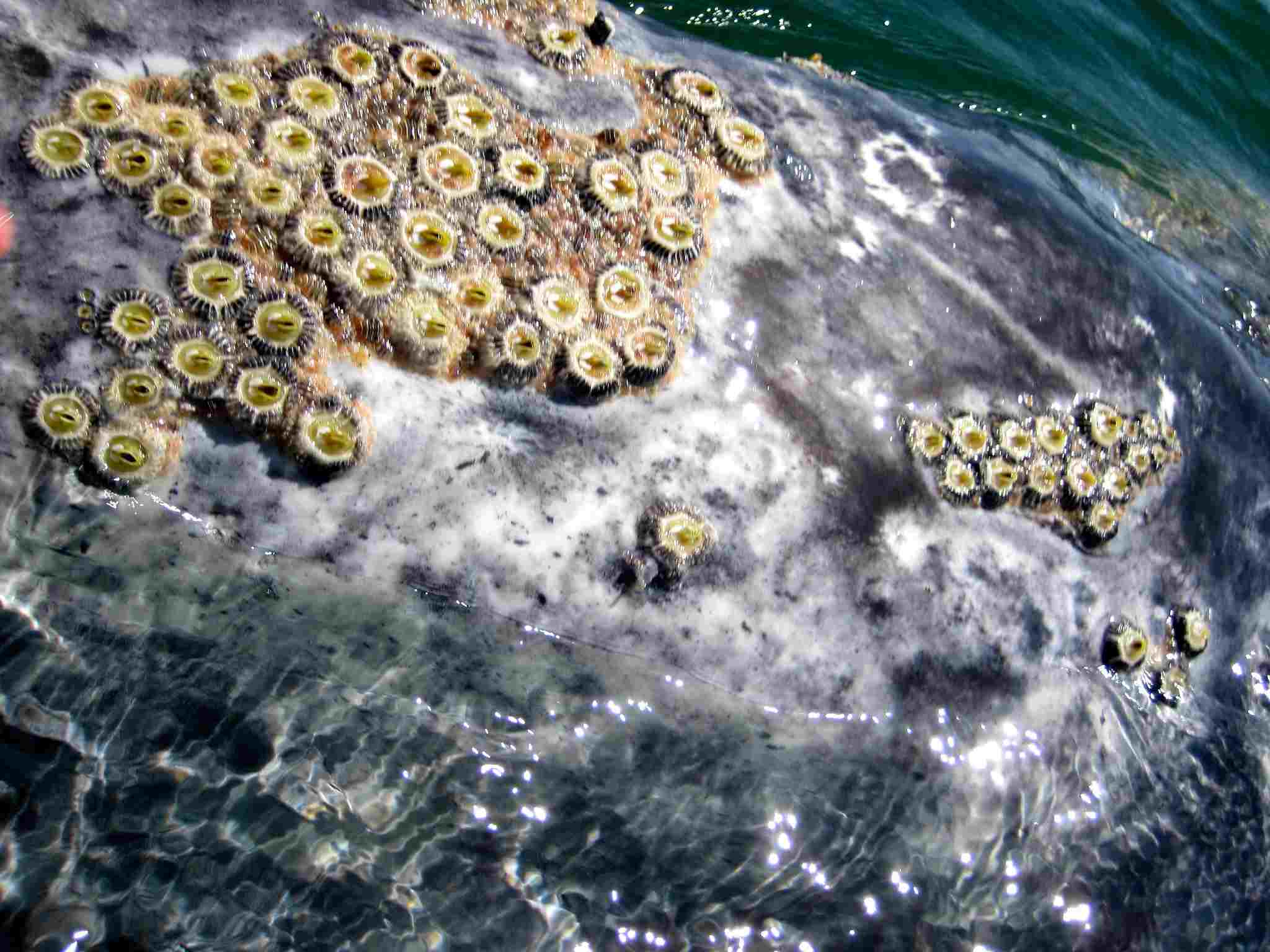
18. What do Whales Eat in Antarctica?
Whales in Antarctica have a diverse diet, feeding on various Antarctic prey including krill, fish, and squid. Krill, a small shrimp-like crustacean, is a staple food for many whale species in this region. These tiny creatures form massive swarms in the nutrient-rich waters of Antarctica, providing a plentiful food source for whales.
Fish and squid are also important prey items for whales in Antarctica, offering additional nutritional value. The abundance of these prey species in the cold Antarctic waters supports the survival and growth of whale populations in this unique ecosystem. Understanding the dietary preferences of whales in Antarctica is crucial for conservation efforts and maintaining the delicate balance of this pristine environment.
19. What are 3 Things that Whales Eat?
Whales have a diverse diet, and they consume a variety of marine organisms. Three common food sources for whales are fish, seals, and crustaceans.
Fish provide a significant portion of a whale’s diet, with species like herring, mackerel, and salmon being commonly consumed. Seals are also on the menu for some whale species, particularly those that inhabit colder waters. Whales prey on seals by using their size and strength to overpower them.
Crustaceans, such as krill and shrimp, are another important food source for many whale species. These small creatures are abundant in certain regions and provide a high nutritional value for whales.
20. Do Whales Swallow Fish?
Whales have a fascinating feeding behavior, and whether or not they swallow fish depends on the size of the fish and the whale’s adaptation. Some whale species, like the humpback whale, use a feeding technique called lunge feeding, where they open their mouths wide and engulf large amounts of water and prey.
In this process, smaller fish can be swallowed whole, while larger fish may be broken down into smaller pieces before being swallowed. Other whale species, such as the blue whale, primarily feed on tiny shrimp-like creatures called krill, which they filter out of the water using baleen plates in their mouths. So, while whales do consume fish, whether they swallow them whole or break them down depends on the specific species and the size of the fish.
21. What do Whales Eat Everyday?
Whales have diverse diets, but what they eat on a daily basis depends on their species and habitat. Some whales, like the blue whale, primarily feed on krill, a small shrimp-like creature.
They consume massive amounts of krill each day, filtering them through their baleen plates. Other whales, such as the humpback whale, have a more varied diet that includes small fish, squid, and krill. They use lunge feeding to engulf large amounts of water and prey.
Additionally, some whale species feed on plankton, including phytoplankton and zooplankton. These microscopic organisms provide a vital source of nutrition for many whales.
22. Do Whales Eat Underwater?
Whales are well-adapted to feeding underwater, as it is their natural habitat. They have evolved various feeding strategies to capture and consume their prey effectively. Whales, such as the humpback whale, use a technique called lunge feeding, where they open their mouths wide and engulf large amounts of water and prey.
This allows them to capture schools of fish or swarms of krill in a single gulp. Other whales, like the blue whale, filter feed by taking in huge volumes of water and then pushing it out through their baleen plates, trapping small prey like krill. These feeding methods enable whales to obtain the necessary nutrients they need to survive and thrive in their underwater environment.
23. Can Whales Eat Humans?
While it is technically possible for whales to eat humans, it is an extremely rare occurrence. Whales are not known to actively seek out humans as prey. Their diet primarily consists of marine organisms such as fish, krill, and plankton.
Whales have specific feeding adaptations that are suited for consuming their natural prey. Their mouths and throats are designed to filter out small organisms like krill and plankton, rather than large mammals like humans. Additionally, the size difference between whales and humans makes it highly unlikely for a whale to mistake a human for food.
Instances of whales interacting with humans in the wild are usually peaceful and non-threatening. Whales are known to be curious creatures and may approach boats or swimmers out of curiosity. However, these interactions are generally harmless and do not involve any attempts to consume humans.
24. Do Whales Eat Plankton?
Whales do eat plankton, but it is important to note that they primarily consume zooplankton rather than phytoplankton. Zooplankton refers to small marine organisms such as tiny shrimp, krill, and small fish larvae. These organisms are an essential part of the whale’s diet, providing them with a rich source of nutrients.
Whales have specialized feeding mechanisms that allow them to filter out zooplankton from the water. They have baleen plates in their mouths that act as a sieve, allowing water to pass through while trapping the zooplankton. The whale then uses its tongue to push the water out, leaving behind the captured prey.
While some species of whales, such as the blue whale, primarily feed on krill, others may also consume other types of plankton, including copepods and small fish larvae. The specific diet of a whale can vary depending on its species and habitat.
25. What do Whales Eat and Drink?
Whales primarily eat other marine animals, such as fish, krill, and shrimp. They have a diverse diet depending on their species and habitat. Some whales, like the blue whale, mainly feed on krill, while others may consume a variety of fish and crustaceans. Whales have specialized feeding mechanisms, like baleen plates or teeth, to capture and consume their prey.
As for drinking, whales do not drink water in the same way humans do. They extract moisture from the food they eat. The marine animals they consume contain water, which provides the necessary hydration for whales. Whales have adapted to their oceanic environment, obtaining both food and water from their prey.
26. Do Whales Eat Seals?
Seals are indeed a common prey for many whale species, particularly killer whales or orcas. These intelligent predators have been known to hunt and feed on seals as part of their diet. Orcas are highly skilled hunters and have developed sophisticated hunting strategies to capture seals efficiently.
Seals are a valuable food source for whales due to their high energy content and abundance in certain regions. Whales, especially orcas, have been observed using their powerful jaws and teeth to catch and consume seals. They employ tactics such as ambushing seals from below or launching coordinated attacks to separate them from their group.
The consumption of seals by whales plays a crucial role in maintaining the balance of marine ecosystems. It is a natural part of the food chain and helps regulate seal populations. Seals, in turn, feed on fish and other smaller marine organisms, contributing to the overall health and stability of the ocean ecosystem.
27. What Do Killer Whales Eat?
Killer whales, also known as orcas, have a diverse diet that includes seals, fish, smaller dolphins, and seabirds. These apex predators are highly adaptable and have been observed hunting and consuming a wide range of prey species.
Seals are a common food source for killer whales, as mentioned in the preceding section. They use their powerful jaws and teeth to catch and consume seals, employing various hunting strategies to ensure a successful hunt.
In addition to seals, killer whales also feed on fish, such as salmon and herring, which are abundant in their habitats. They are skilled hunters and use their intelligence and teamwork to capture fish efficiently.
Smaller dolphins and seabirds are also part of the killer whale’s diet, although they are not as commonly consumed as seals and fish.
28. What Does a Blue Whale Eat?
Blue whales, the largest animals on Earth, have a diet that consists almost exclusively of krill. These magnificent creatures consume massive amounts of these tiny shrimp-like crustaceans every day. Blue whales are filter feeders, meaning they use baleen plates in their mouths to filter out the water and trap the krill inside.
With each gulp, a blue whale can consume thousands of kilograms of krill. They have a unique feeding strategy called lunge feeding, where they accelerate towards a dense patch of krill, open their mouths wide, and engulf as much krill-filled water as possible. The water is then expelled through the baleen plates, leaving behind the krill to be swallowed.
